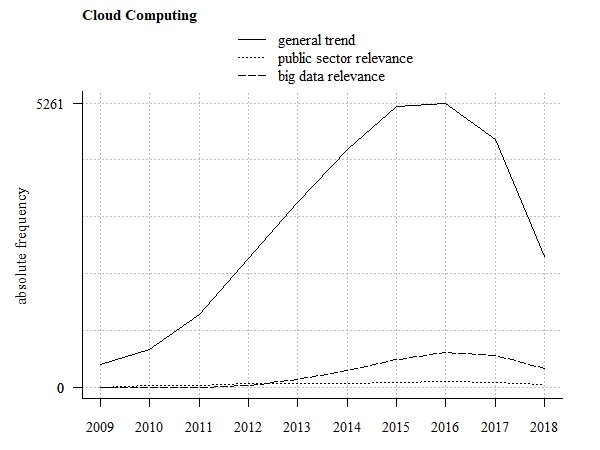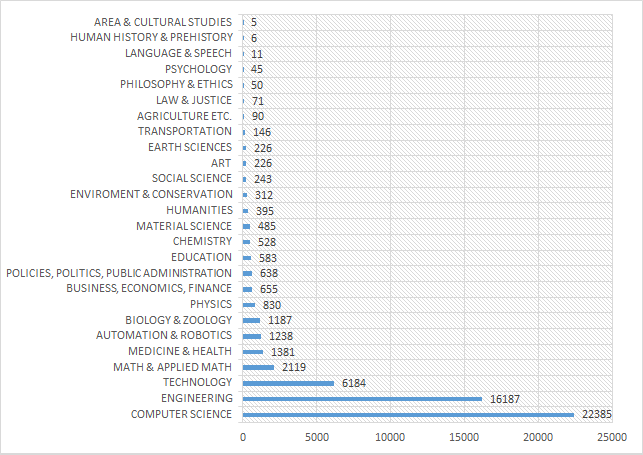Open data - Download the Knowledge base
You are free to download the data of this Knowledge base.
To do this you must be an authenticated user: log in or sign in now.
All the data are licensed as Creative Common CC-BY 4.0.
Cloud Computing is a model that enables ubiquitous access to a shared pool of configurable technological assets available on-demand in a virtualised environment. Cloud services are remotely managed by cloud service providers and can be rapidly provisioned and released with minimal effort or service provider interaction. It can potentially achieve coherence and economies of scale.
The cloud model encompasses the four deployment models Public, Private, Hybrid and Community and the following three delivery models [1]:
Software as a Service
The provider delivers software based on one set of common code and data definitions, which is running on a cloud infrastructure. It is consumed in a one-to-many model by all contracted customers at anytime on a pay-for-use basis or as a subscription based on use metrics. The applications are accessible from various devises through a thin client interface. [2]
Platform as a Service
Platform services provide a virtual environment for software developers to build applications and services using tools (e.g. operating systems, database management systems or server software) supplied by the provider. It can be accessed by users via their web browsers. [1]
Infrastructure as a Service
Infrastructure services provide specifically virtualized computing infrastructure such as virtual server space, IP addresses, network connections or bandwidth. [1]
Security and confidentiality are well known as the most serious obstacles to cloud adoption in the public sector. For this reason, there is a demand for trusted cloud services that constitute public administration business processes. [3]


| Agenda Setting | Policy Design and Analysis | Policy Implementation | Policy Monitoring and Evaluation | |
|---|---|---|---|---|
| Agriculture, Fisheries, Forestry & Foods | ||||
| Economy & Finance | ||||
| Education, Youth, Culture & Sport | ||||
| Employment & Social Security | ||||
| Environment & Energy | ||||
| Health | ||||
| Foreign Affairs and Defence | ||||
| Justice, Legal System & Public Safety | ||||
| Public Affairs | ||||
| Innovation, Science & Technology | ||||
| Urban Planning & Transport | ||||
| Institutional Questions / Internal Affairs |
In the public sector Cloud Computing is still not well established considering the statistics from Eurostat: the average share of EU-citizens that used the internet to interact with public authorities was about 57 % in 2018, which in turn shows that the amount of E Government offers is expandable.
Particularly mentionable are projects like the European Open Science Cloud aim to collect scientific research data and offer services for the storage, management, analysis and re-use of research data, across borders and scientific disciplines.
You are free to download the data of this Knowledge base.
To do this you must be an authenticated user: log in or sign in now.
All the data are licensed as Creative Common CC-BY 4.0.
I wouldn’t consider cloud…
I wouldn’t consider cloud computing a trend nowadays, as I think it’s well-established in the overwhelming majority of everyday processes. However, if the POV is that of the public sector, cloud computing might be the utmost priority! Public organisations and structures should move to the cloud ASAP!